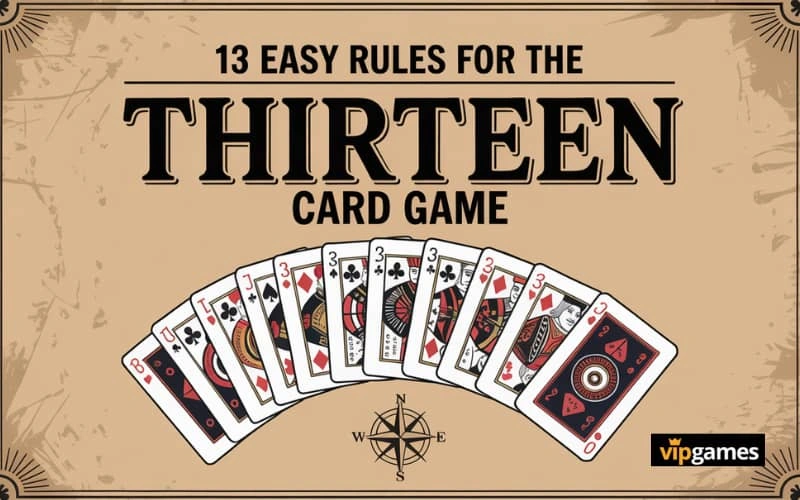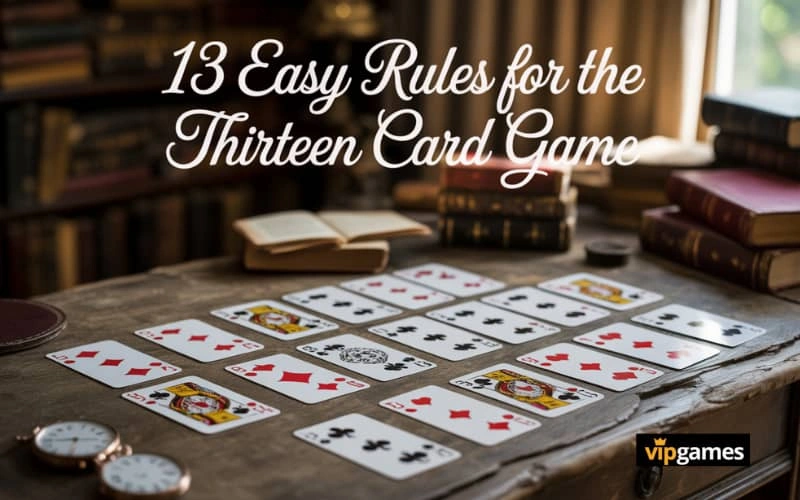The thirteen card game is a classic and widely enjoyed card game in many parts of Asia, especially India. Played mostly between 2 to 6 players, this game involves skill vip game, strategy, and a bit of luck. The aim is to arrange the thirteen cards in valid sequences and sets to win points or cash, depending on the version of play. Understanding the core mechanics is essential for enjoying and excelling at the thirteen card game. This guide will walk you through 13 easy rules that will help beginners and even intermediate players refine their approach and get better at the game.
Rule 1: Total Cards Dealt Are Thirteen
Every player is dealt exactly thirteen cards at the start of the game. This is the foundational aspect of the thirteen card game and gives the game its name. These cards are distributed randomly from a standard 52-card deck or from two decks if more players are involved. Jokers may also be included depending on the variation.
Rule 2: Form Sequences and Sets
The primary goal in the thirteen card game is to arrange all your cards into valid sequences and sets. A sequence consists of three or more consecutive cards of the same suit, while a set contains three or four cards of the same rank but from different suits. At least two sequences are required to make a valid hand, and one of them must be a pure sequence.
Rule 3: Understand Pure and Impure Sequences
A pure sequence is made up of consecutive cards from the same suit without using a joker. For example, 5-6-7 of hearts is a pure sequence. An impure sequence can use a joker as a replacement for a missing card. A valid declaration in the thirteen card game requires at least one pure sequence.
Rule 4: Jokers Can Change the Game
Jokers play a strategic role in the thirteen card game. There are printed jokers in the deck, and a wild joker is also chosen at the beginning of the game. Jokers can be used to substitute any missing card in a sequence or a set, but they cannot be used in place of a card in a pure sequence.
Rule 5: Valid Declaration Is the Winning Move
To win in the thirteen card game, a player must make a valid declaration by arranging all 13 cards into correct sequences and sets. If a player declares incorrectly, they receive penalty points. Therefore, checking all cards and combinations before declaring is important.
Rule 6: Minimum Two Sequences Required
A valid hand must contain at least two sequences. Among these, at least one must be a pure sequence. The second sequence can be either pure or impure. Without these two sequences, the hand is considered invalid even if the other cards form valid sets.
Rule 7: Use of High Cards and Low Cards
In the thirteen card game, both high-value and low-value cards are important. High cards like King, Queen, and Ace can earn you more points if left unused in a valid combination. Low cards are often used to form pure sequences quickly. A smart balance between the two can make or break a game.
Rule 8: Drop Option Is Available
If you receive a bad hand, you can choose to drop out of the game at the very beginning. This is called the first drop and usually results in a smaller penalty. If you drop mid-game, the penalty is higher. This rule protects players from large point losses due to bad luck in card distribution.
Rule 9: Rearrangement After Drawing
Players are allowed to rearrange their cards during the game after drawing a card. This helps in refining your sequence or set strategy. Observing your hand carefully after each draw is a key skill in the thirteen card game.

Rule 10: Discard Wisely
At the end of your turn, you must discard one card. This discarded card becomes available for the next player to pick. Discarding wisely is a tactical part of the thirteen card game. It can prevent opponents from forming sequences and also keep your hand balanced.
Rule 11: Keep Track of Opponents’ Moves
One of the important but often overlooked rules in the thirteen card game is to observe what your opponents are picking and discarding. This gives insight into what sequences they are forming and helps you avoid discarding cards that might help them.
Rule 12: Penalty Points System
If you lose the game or make an invalid declaration, you will be awarded penalty points based on the cards not arranged in proper sequences or sets. Face cards carry 10 points each, numbered cards carry their face value, and jokers are worth zero points. The goal is to finish the game with the least points.
Rule 13: Practice and Pattern Recognition
The more you play the thirteen card game, the better you become at recognizing patterns and sequences. It is a game of observation, memory, and strategy. Consistent practice helps players spot potential pure sequences and usable sets quickly, which increases the chances of winning.
Conclusion
The thirteen card game is a mix of luck, skill, and timing. By understanding and applying these 13 easy rules, any beginner can quickly become competent in the game. Knowing when to drop, how to form pure sequences, and how to use jokers wisely can turn the tide in your favor. The excitement of arranging your cards strategically and declaring a winning hand is what makes the thirteen card game a favorite among card game enthusiasts. Whether you play for fun or competition, mastering these rules is the first step toward success.






